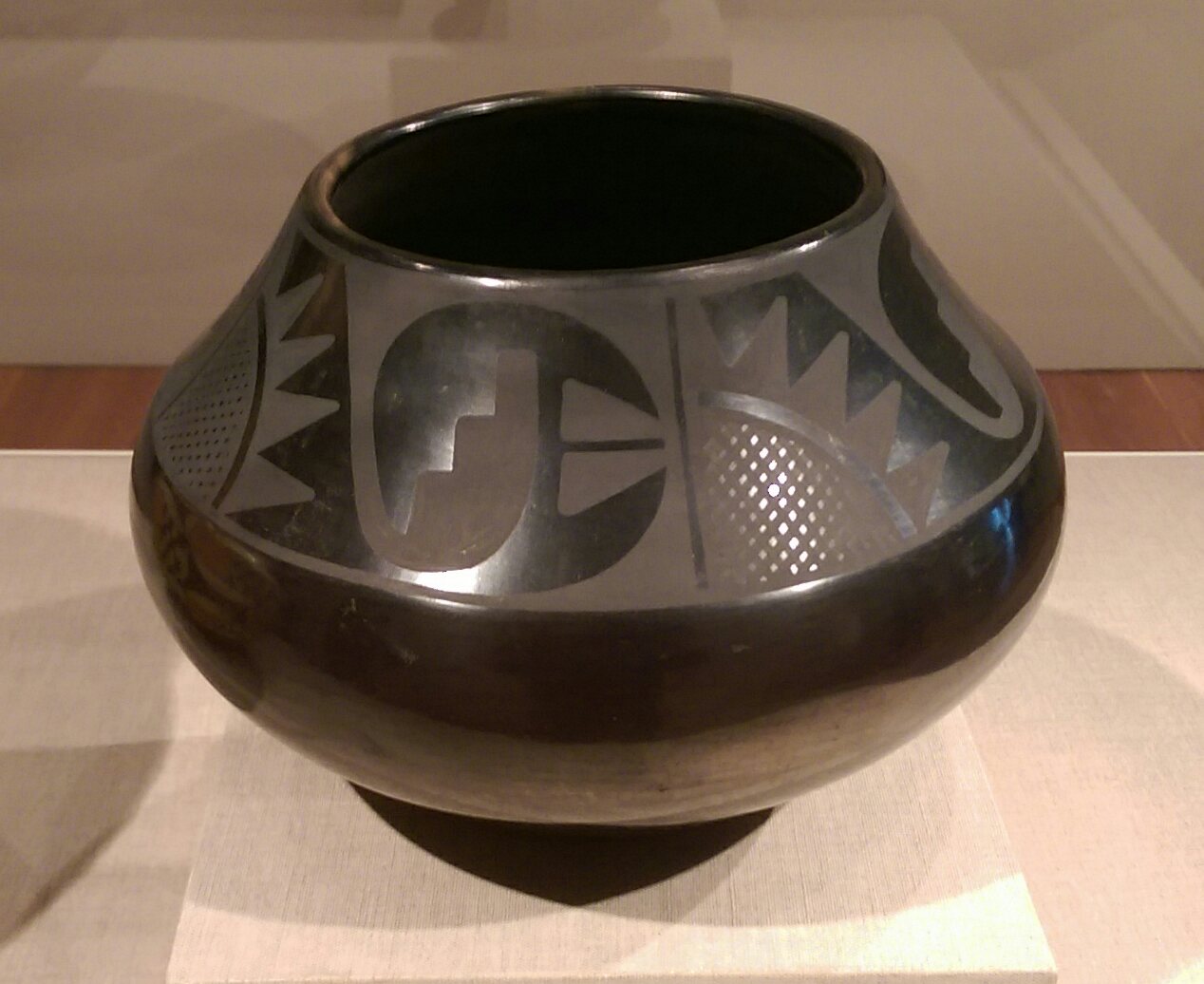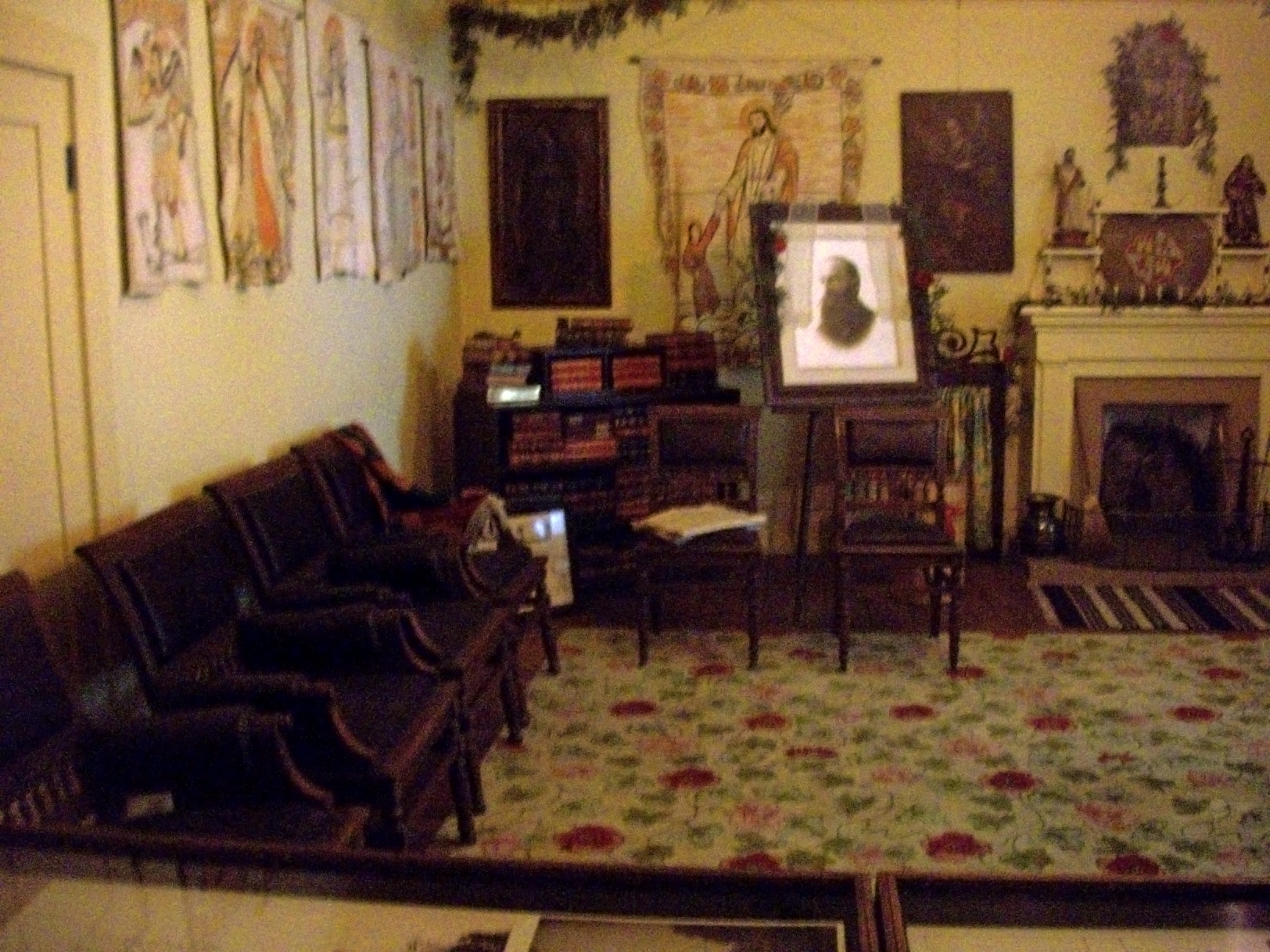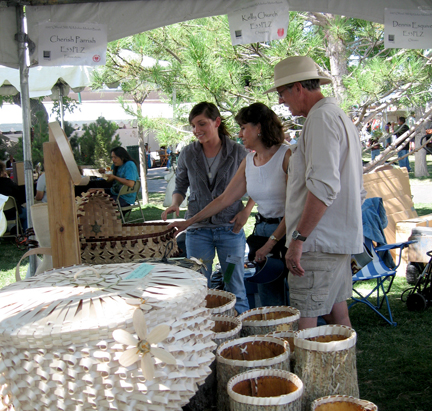|
Maria Chabot
Maria Chabot (1913–2001), was an advocate for Native American arts, a rancher, and a friend of Georgia O'Keeffe. She led the restoration of her house in Abiquiú, New Mexico and took the photograph of O'Keeffe entitled ''Women Who Rode Away,'' in which the artist was on the back of a motorcycle driven by Maurice Grosser. Their correspondence was published in the book ''Maria Chabot—Georgia O'Keeffe: Correspondence 1941-1949''. Chabot has documented and promoted Spanish colonial and Native American art in the Southwest and facilitated the development of the Santa Fe Indian Market from small fairs throughout the state. She was executive secretary of the New Mexico Association on Indian Affairs. Chabot has been described as "a photographer, writer, and explorer". Early life Maria Lea Chabot was born on September 19, 1913 in San Antonio, Texas, the daughter of Charles Jasper Chabot, a capitalist, and his third wife Olive Anderston Johnston, Chabot. Maria Chabot had three half-si ... [...More Info...] [...Related Items...] OR: [Wikipedia] [Google] [Baidu] |
Georgia O'Keeffe
Georgia Totto O'Keeffe (November 15, 1887 – March 6, 1986) was an American modernist artist. She was known for her paintings of enlarged flowers, New York skyscrapers, and New Mexico landscapes. O'Keeffe has been called the "Mother of American modernism". In 1905, O'Keeffe began art training at the School of the Art Institute of Chicago and then the Art Students League of New York. In 1908, unable to fund further education, she worked for two years as a commercial illustrator and then taught in Virginia, Texas, and South Carolina between 1911 and 1918. She studied art in the summers between 1912 and 1914 and was introduced to the principles and philosophies of Arthur Wesley Dow, who created works of art based upon personal style, design, and interpretation of subjects, rather than trying to copy or represent them. This caused a major change in the way she felt about and approached art, as seen in the beginning stages of her watercolors from her studies at the University of ... [...More Info...] [...Related Items...] OR: [Wikipedia] [Google] [Baidu] |
Works Progress Administration
The Works Progress Administration (WPA; renamed in 1939 as the Work Projects Administration) was an American New Deal agency that employed millions of jobseekers (mostly men who were not formally educated) to carry out public works projects, including the construction of public buildings and roads. It was set up on May 6, 1935, by presidential order, as a key part of the Second New Deal. The WPA's first appropriation in 1935 was $4.9 billion (about $15 per person in the U.S., around 6.7 percent of the 1935 GDP). Headed by Harry Hopkins, the WPA supplied paid jobs to the unemployed during the Great Depression in the United States, while building up the public infrastructure of the US, such as parks, schools, and roads. Most of the jobs were in construction, building more than 620,000 miles (1,000,000 km) of streets and over 10,000 bridges, in addition to many airports and much housing. The largest single project of the WPA was the Tennessee Valley Authority. At its peak ... [...More Info...] [...Related Items...] OR: [Wikipedia] [Google] [Baidu] |
Alcalde, New Mexico
Alcalde (Spanish for ''mayor'') is a census-designated place (CDP) in Rio Arriba County, New Mexico, United States. The population was 285 at the 2010 census. Geography According to the United States Census Bureau, the CDP has a total area of , all land. Climate Demographics At the 2000 census there were 377 people, 121 households, and 99 families in the CDP. The population density was 735.3 people per square mile (285.4/km). There were 138 housing units at an average density of 269.2 per square mile (104.5/km). The racial makeup of the CDP was 37.40% White, 0.27% African American, 1.59% Native American, 0.27% Asian, 54.64% from other races, and 5.84% from two or more races. Hispanic or Latino of any race were 89.12%. Of the 121 households 46.3% had children under the age of 18 living with them, 52.1% were married couples living together, 19.8% had a female householder with no husband present, and 17.4% were non-families. 16.5% of households were one person and 7.4% were on ... [...More Info...] [...Related Items...] OR: [Wikipedia] [Google] [Baidu] |
Indian Arts And Crafts Board
The Indian Arts and Crafts Board (IACB) is an agency within the United States Department of the Interior whose mission is to "promote the economic development of American Indians and Alaska Natives through the expansion of the Indian arts and crafts market." It was established by Congress in 1935. It is headquartered at the Main Interior Building in Washington, DC. Scope The board provides advice and promotional activities and oversees the implementation of the Indian Arts and Crafts Act of 1990, a truth-in-advertising law attempting to stop non-Native-made artworks from being sold as Native-made. The IACB also operates three museums: * Sioux Indian Museum, housed in the Journey Museum in Rapid City, South Dakota * Museum of the Plains Indian in Browning, Montana * Southern Plains Indian Museum in Anadarko, Oklahoma. The IACB also publishes informative consumer education publications which are available for free download via its website. These publications include: Indian Ar ... [...More Info...] [...Related Items...] OR: [Wikipedia] [Google] [Baidu] |
San Ildefonso Pueblo, New Mexico
San Ildefonso Pueblo (Tewa: Pʼohwhogeh Ówîngeh ’òhxʷógè ʔówîŋgè"where the water cuts through" ) is a census-designated place (CDP) in Santa Fe County, New Mexico, United States, and a federally recognized tribe, established c. 1300 C.E. The Pueblo is self-governing and is part of the Santa Fe, New Mexico Metropolitan Statistical Area. The population was 524 as of the 2010 census, reported by the State of New Mexico as 1,524 in 2012, and there were 628 enrolled tribal members reported as of 2012 according to the Department of the Interior. San Ildefonso Pueblo is a member of the Eight Northern Pueblos, and the pueblo people are from the Tewa ethnic group of Native Americans, who speak the Tewa language. Geography San Ildefonso is located at (35.897902, -106.121834). According to the United States Census Bureau, the pueblo has a total area of , of which is land and (5.54%) is water. San Ildefonso Pueblo is located at the foot of Black Mesa. Demographics As ... [...More Info...] [...Related Items...] OR: [Wikipedia] [Google] [Baidu] |
Maria Martinez
Maria Montoya Martinez (1887, San Ildefonso Pueblo, New Mexico – July 20, 1980, San Ildefonso Pueblo) was a Native American artist who created internationally known pottery. Martinez (born Maria Poveka Montoya), her husband Julian, and other family members, including her son Popovi Da, examined traditional Pueblo pottery styles and techniques to create pieces which reflect the Pueblo people's legacy of fine artwork and crafts. The works of Maria Martinez, and especially her black ware pottery, survive in many museums, including the Smithsonian, the Metropolitan Museum of Art, the Denver Art Museum, and more. The Penn Museum in Philadelphia holds eight vessels – three plates and five jars – signed either "Marie" or "Marie & Julian". Maria Martinez was from the San Ildefonso Pueblo, a community located 20 miles northwest of Santa Fe, New Mexico. At an early age, she learned pottery skills from her aunt and recalls this "learning by seeing" starting at age eleven, as sh ... [...More Info...] [...Related Items...] OR: [Wikipedia] [Google] [Baidu] |
Palace Of The Governors
The Palace of the Governors ( es, Palacio de los Gobernadores) is an adobe structure built in the Territorial Style of Pueblo architecture on Palace Avenue in Santa Fe, New Mexico. Located within the Santa Fe Historic District along the Santa Fe Plaza between Lincoln and Washington avenues, it has served as the seat of government for New Mexico for centuries, having been established as the capitol building of '' Nuevo México'' in 1610. History In 1610, Pedro de Peralta, the newly appointed governor of '' Santa Fe de Nuevo México'' covering most of the modern American Southwest, began construction on the Palace of the Governors, though some recent historical research has suggested that construction began midway through his term in 1618. In the following years, the Palace changed hands as the territory of New Mexico did, seeing the Pueblo Revolt of 1680, the Spanish return from 1693 to 1694, Mexican independence in 1821, American territorial status in 1848, and US statehood in 191 ... [...More Info...] [...Related Items...] OR: [Wikipedia] [Google] [Baidu] |
Santa Fe Indian Market
The Santa Fe Indian Market is an annual art market held in Santa Fe, New Mexico on the weekend following the third Thursday in August. The event draws an estimated 150,000 people to the city from around the world. The Southwestern Association for Indian Arts (SWAIA) organizes the market, showcasing work from 1,200 of the top Native American artists from tribes across the country. History Early Years Indian Market was organized by Kenneth M. Chapman in 1922 as part of an expanded Fiesta de Santa Fe sponsored by the Museum of New Mexico. Edgar L. Hewett, the museum's director, viewed the early Indian Fair events as part of his efforts for public anthropology. The events were held inside the National Guard Armory with an admission fee charged. Pueblo pottery, Navajo textiles, and Pueblo easel-style paintings, such as produced by Dorothy Dunn's Studio students at the Santa Fe Indian School, were the primary art forms represented. Museum staff served as judges, screening work ... [...More Info...] [...Related Items...] OR: [Wikipedia] [Google] [Baidu] |
New Mexico Magazine
''New Mexico Magazine'' was launched in 1923, and is the first state magazine founded in the United States. It is published monthly in print, online, and via an iOS app. Additionally, the magazine also maintains a store, selling New Mexico-related products. Overview Based in Santa Fe, the magazine got its start as ''New Mexico Highway Journal'', the official New Mexico Highway Department newsletter, but its mission expanded in the 1930s, when it began to run more feature stories of interest to New Mexico tourists. Today, reaching over 100,000 readers a month, the magazine covers a broad range of topics, including New Mexico's history, archaeology, culture, people, natural wonders, and tourist attractions. Most of New Mexico's best-known authors, journalists, and photographers have contributed work to the magazine over the years. Tony Hillerman, Rudolfo Anaya, John Nichols, Ernie Pyle, John L. Sinclair and Erna Fergusson have all penned articles or essays. Edward Weston gave the ... [...More Info...] [...Related Items...] OR: [Wikipedia] [Google] [Baidu] |
Wheelwright Museum Of The American Indian
The Wheelwright Museum of the American Indian is a museum devoted to Native American arts. It is located in Santa Fe, New Mexico and was founded in 1937 by Mary Cabot Wheelwright, who came from Boston, and Hastiin Klah, a Navajo singer and medicine man. History Wheelwright and Klah were introduced in 1921 and quickly became close friends. It was not long before they determined to create a permanent record of Klah's and other singers’ ritual knowledge. Klah dictated and Wheelwright recorded the Navajo Creation Story and other great narratives that form the basis of Navajo religion. While Wheelwright concentrated on the spoken word in Navajo ritual, Frances (“Franc”) Newcomb focused on the sandpaintings that are created and destroyed during healing ceremonies, recreating versions of them in tempera on paper. Klah participated in yet another way: he was a weaver, and his huge tapestries were also permanent records of sandpaintings. By the early 1930s, it was clear to Wheelwri ... [...More Info...] [...Related Items...] OR: [Wikipedia] [Google] [Baidu] |
Navajo
The Navajo (; British English: Navaho; nv, Diné or ') are a Native American people of the Southwestern United States. With more than 399,494 enrolled tribal members , the Navajo Nation is the largest federally recognized tribe in the United States; additionally, the Navajo Nation has the largest reservation in the country. The reservation straddles the Four Corners region and covers more than 27,325 square miles (70,000 square km) of land in Arizona, Utah, and New Mexico. The Navajo Reservation is slightly larger than the state of West Virginia. The Navajo language is spoken throughout the region, and most Navajos also speak English. The states with the largest Navajo populations are Arizona (140,263) and New Mexico (108,306). More than three-fourths of the enrolled Navajo population resides in these two states. [...More Info...] [...Related Items...] OR: [Wikipedia] [Google] [Baidu] |







